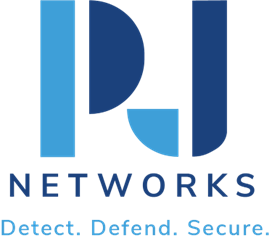Slack Thread Sight of DLP Explanation for 2024
An era where digital data is what keeps businesses alive and well, hence securing this data is one of the prime concerns for an organization. Today, we kick off 2024 and Data Loss Prevention (DLP) is still one of the key ways for enterprises to protect their sensitive data. In this article, we are going to walk you through everything related to DLP and why it matters when it comes to securing your business from data leakage.
Data Loss Prevention (DLP) Intro
Data Loss Prevention (DLP) is a unified system of tools and strategies that monitors and protects your sensitive data from unauthorized access. Data Loss Protection solutions allow organizations to prevent data breaches by monitoring, detection and blocking sensitive data in-use or in-motion or at-rest. Today, as there is steep competition in cyber world and enterprises stand vulnerable to attacks in every passing day; data breaches are a danger for any business. ResultsFinancial losses, reputational damage and regulatory fines Companies in all industries have suffered data breaches in a data breach incident. Therefore, a good DLP strategy has become an important part of cybersecurity infrastructure that helps in preventing data breaches in the holistic approach.
Types of Data at Risk
The data type is the most important to understand when identifying sensitive data that may be exposed and developing a DLP strategy. As a matter of fact, the data categories that are at highest risk usually comprise:
- PII (Personally Identifiable Information): Everything else that could specifically identify an individual, such as social security numbers, financial information, contact information etc.
- Intellectual Property (IP): Proprietary information pertaining to product designs, business strategy, market analysis and trade secrets.
- Payment card information (PCI): Sensitive credit and debit cards used to purchase.
- Protected Health Information (PHI): Data relating to the health of an individual and is compliant under regulations such as HIPAA.
- PharmaFET Report: Documentations for Drug approvals by US FDA
- Corporate Financial Informations: financial report, transaction data, internal reports etc.
With the shift to cloud services and work from home, protecting these separate data types in an increasingly complex data environment demands specific tactics and more robust measures for data protection.
Implementing DLP Policies
A DLP strategy for an enterprise would be incomplete without proper planning processes; technology that integrates with every element of the organizational ecosystem and enforces compliance throughout it, whenever necessary. Businesses can use DLP effectively in the following way:
- Conduct Data Assessment: Start by identifying sensitive data across your business, and categorize it. This is a really simple way of knowing to what extent data resides with, who needs access it and how it flows in and out through the organization.
- Define DLP Policies: Establish clear data access, use, and sharing policies That may include establishing data protection agreements to control how your data will be treated, and ensuring that unauthorized parties cannot access your information, leak it or even lose it.
- Deploy DLP Solutions: Select DLP tools and integrate them according to your unique organizational requirements. They must provide all-encompassing monitoring features, alert systems, and incident response mechanisms. Solution Integrated to Existing Systems and Composable for Both Cloud and On-premises
- Implement Access Controls: Leverage role based access controls to restrict sensitive data only against authorized personnel. This reduces the potential of internal threats, and unintentional data leaks.
- Conduct Regular Training: Train employees regularly in data security policy, good practice around data protection, and procedures to follow in a potential data breach incident
- Review & Update Policies: Your DLP policies should continue evolving with the technology and business requirements. Regularly conduct audits and policy reviews to uncover gaps and expand strategies as necessary.
Arranging an effective data protection framework is essential as organizations navigate their way through new and evolving threats to their data. Selecting the best DLP tools for 2024 can be difficult, but the following highly effective solutions can help organizations of all sizes defend their data: Symantec Data Loss Prevention enjoys a specialization in DLP solutions with excellent data visibility and the best threat detection solution. McAfee Total Protection for DLP: It is the best solution for monitoring and reporting and is specifically known for its emphasis on the endpoint and centralized control. Microsoft Information Protection : Microsoft 365 and Azure collaborate exceptionally automatic data categorization to protect sensitive in any capacity. Digital Guardian; because of a dominant force in data loss and threat detection for several years, the product provides contextual knowledge that DLP approaches could consume when enacting protocols. Forcepoint DLP: Forcepoint provides real-time risk assessment and contextual intelligence for better breaches detection and complete data hold. Depending on the organization’s individual characteristics, there is undoubtedly the best DLP solution. Data protection is no longer just a security solution in 2024; it is a successful business strategy.
In the end, DLP is not only compliance, but rather a tool through which you can create an effective data security plan to protect your organisation’s reputation, financial health, and most importantly customer confidence. With detailed knowledge of the types of data in jeopardy, appropriately crafted DLP policies powered by appropriate tools can help to improve a business’ data protection pathways. This is an important concept with regards to security, as precautionary measures are always more preferable over corrective actions in the cybersecurity world.
